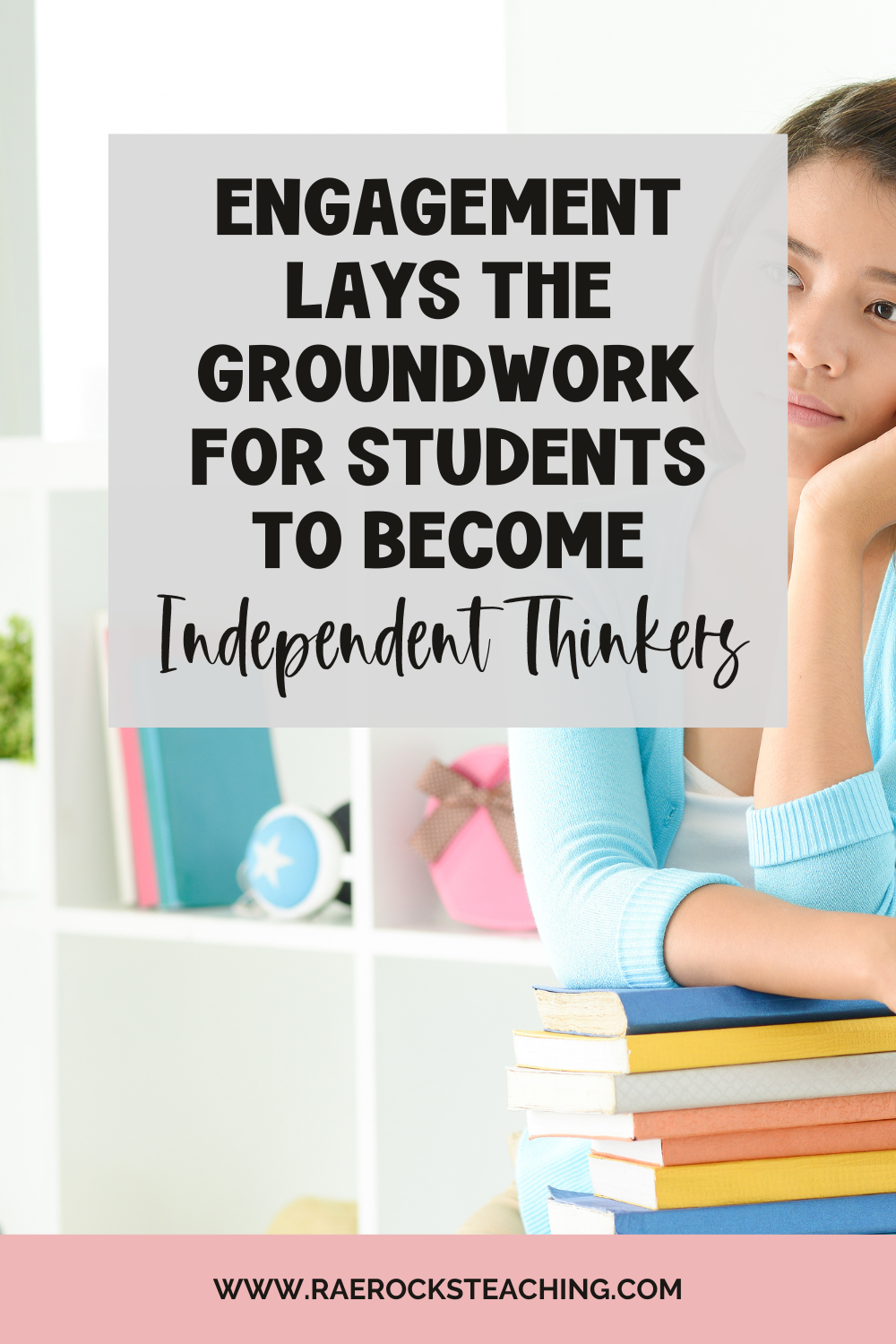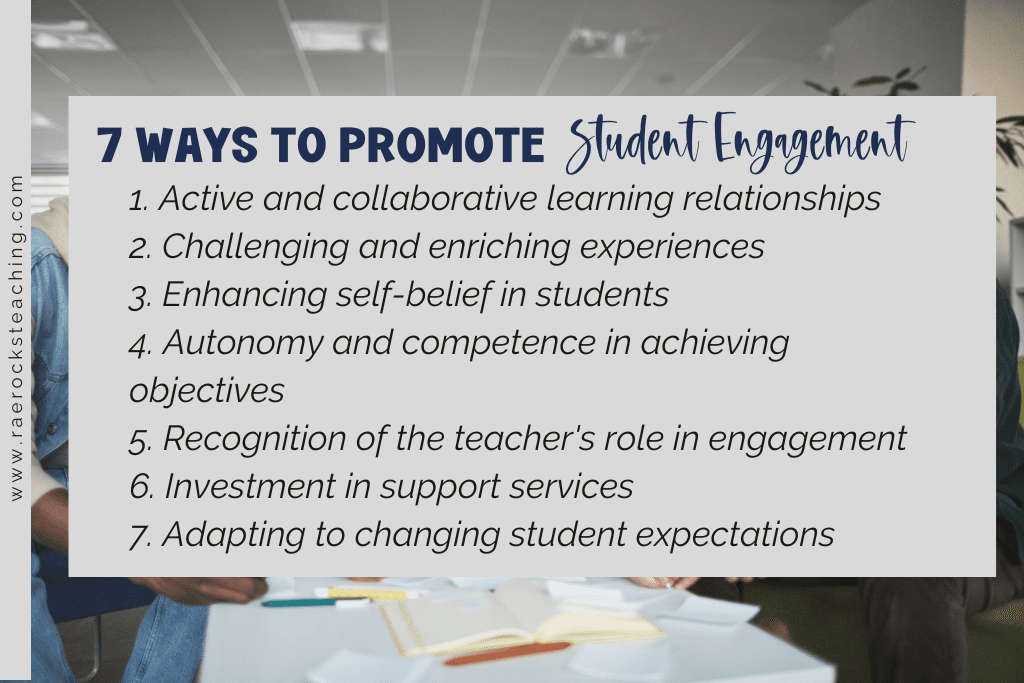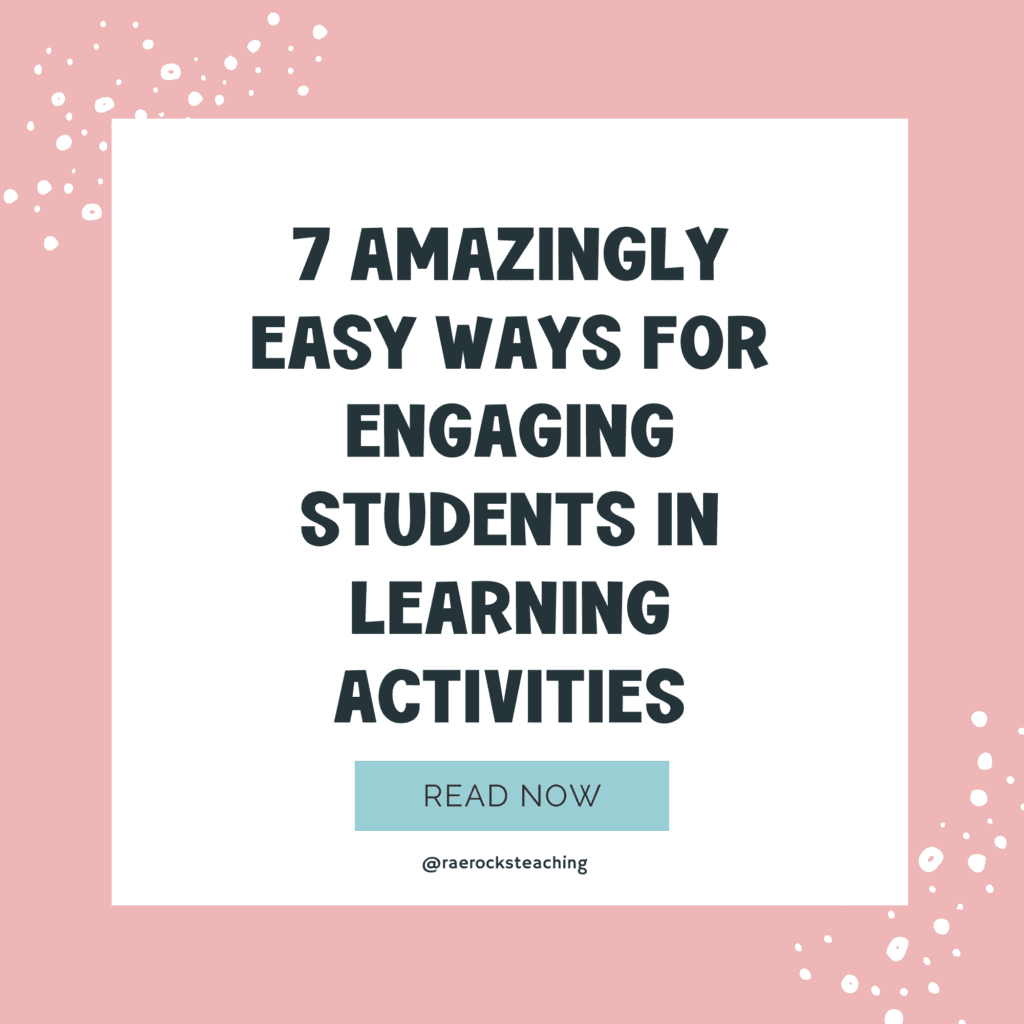Engaging students in learning activities is essentially about making sure they’re not just passively listening but actively participating in their education. It’s all about interaction and involvement. When students engage, they pay more attention, think critically, and are more likely to retain the information they’re learning. This isn’t just about making lessons fun; it’s crucial for effective learning. Students who are engaged are developing skills that go beyond the classroom, such as problem-solving and critical thinking. Plus, engagement helps students feel more connected to their education, making them more likely to pursue learning with enthusiasm.
Looking for more ways to engage your lessons in class?
Engaging Students in Class
As teachers, promoting student engagement is crucial in our classroom because it directly impacts our students’ ability to absorb and apply what they learn. By developing an environment where students are actively involved, we’re not just teaching them facts; we’re helping them develop the skills to navigate challenges both in and out of the classroom. Engagement lays the groundwork for students to become independent thinkers and lifelong learners, setting them up for success well beyond their school years.

-
Save
7 Ways to Promote Student Engagement
- Create learning that is active, collaborative, and develops learning relationships.
To promote student engagement, we need to ditch the lecture-heavy approach and create an environment where learning is an active, team sport. Think group projects, debates, and peer reviews that not only engage students in class but also help them build valuable relationships. This way, they’re not just learning from you but from each other, making the whole process more dynamic and interactive.
- Create experiences that are challenging and enriching that extend their academic abilities.
Engaging students in learning activities that push their limits can dramatically increase student participation. By designing tasks that are a bit outside their comfort zone, we’re essentially telling them, “Hey, I believe you can do more,” which encourages them to stretch their academic muscles. This doesn’t mean turning the classroom into an intellectual gladiator arena, but rather offering challenges that are enriching and within their reach.
- Enhance students’ self-belief.
Let’s face it, a student who believes they can succeed is halfway there. Promoting student engagement often means playing the part of a cheerleader, showing genuine belief in their abilities. This boosts their confidence, making them more likely to take risks, participate, and engage in the learning process. It’s about creating a classroom atmosphere that says, “You’ve got this,” without sounding like a motivational poster.
- Enable students to work autonomously, with each other, and feel they are competent to achieve their own objectives.
Promoting student learning isn’t just about what happens in the classroom; it’s also about setting the stage for independence. By allowing students to work on their own or in groups, we’re handing them the reins and saying, “I trust you to steer.” This autonomy not only boosts their confidence but also makes them feel competent, further increasing their willingness to engage and participate.
- Recognize we teachers are central to engagement.
Never underestimate the power of your presence. The way we teachers show up, interact, and even the enthusiasm we bring to our subjects plays a huge role in engaging students in class. If we’re not into it, why should they be? So, acknowledging our role and adapting our teaching style can significantly influence how students participate and engage.
- Invest in a variety of support services.
Sometimes, to increase student participation, we need to look beyond the classroom walls. Investing in support services like tutoring, counseling, and extracurricular activities can provide students with a more rounded educational experience. It’s us ensuring that our students have the support they need to engage fully in their learning journey.
- Adapt to changing student expectations.
Last but not least, engaging students in learning activities means staying in tune with their evolving needs and expectations. The classroom isn’t immune to change; what worked ten years ago might not cut it today. By being flexible and open to new ideas, we’re more likely to meet students where they are, making learning relevant and engaging for them.

-
Save
There you have it my teacher friend…7 ways to light up that engagement spark in your classroom without resorting to a song and dance (unless, of course, that’s your thing).
Don’t forget to Sign up for the FREE GUIDE | Flip & Thrive: Your 5-Step Quickstart Guide to a More Engaging Classroom

-
Save
I love sharing helpful content with y’all and would love to connect on IG or Facebook. I’m on TikTok too! Follow me and send me a DM with what you need more of because I’m here to help! If you are looking for even more inspiration, find me on Pinterest!
Share via:








